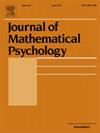广义概率论中类量子认知与神经网络的耦合
IF 1.5
4区 心理学
Q2 MATHEMATICS, INTERDISCIPLINARY APPLICATIONS
引用次数: 0
摘要
过去几年,类量子(QL)建模在认知、心理学和决策等领域的应用激增。尽管这种方法在解释各种心理现象方面取得了成功,但由于缺乏与大脑神经生理过程的明确联系,仍然存在潜在的不满。目前,它仍然是一种现象学方法。在本文中,我们开发了通信神经元网络的QL表示。这种表示不是基于标准量子理论,而是基于广义概率论(GPT),重点是操作测量框架(参见2.1节,比较经典、量子和广义概率论)。具体来说,我们使用的GPT版本依赖于有序线性状态空间,而不是传统的复希尔伯特空间。将通信神经元网络建模为加权有向图,用其权重矩阵进行编码。这些权重矩阵的状态空间嵌入在GPT框架中,在测量仪器的理论中纳入了效果可观测值和状态更新-这是该模型的一个关键方面。在神经元连通性的特定假设下,用张量积表示神经元网络的复合系统S=(S1,S2)。这种S1⊗S2表示显著增强了s的计算能力。基于gpt的方法成功地复制了关键的QL效应,如顺序、不可重复性和分离效应——这些现象通常与决策干扰有关。此外,该框架还支持在抑郁症和癫痫等神经系统疾病的医学诊断中进行QL建模。虽然本文主要关注认知和神经网络,但所提出的形式主义和方法可以直接应用于广泛的生物和社会网络。此外,它支持量子计算的优势主张,可以作为开发基于QL的人工智能系统的基础,特别是利用振荡器网络的QL表示。本文章由计算机程序翻译,如有差异,请以英文原文为准。
Coupling quantum-like cognition with the neuronal networks within generalized probability theory
The past few years have seen a surge in the application of quantum-like (QL) modeling in fields such as cognition, psychology, and decision-making. Despite the success of this approach in explaining various psychological phenomena, there remains a potential dissatisfaction due to its lack of clear connection to neurophysiological processes in the brain. Currently, it remains a phenomenological approach. In this paper, we develop a QL representation of networks of communicating neurons. This representation is not based on standard quantum theory but on generalized probability theory (GPT), with a focus on the operational measurement framework (see section 2.1 for comparison of classical, quantum, and generalized probability theories). Specifically, we use a version of GPT that relies on ordered linear state spaces rather than the traditional complex Hilbert spaces. A network of communicating neurons is modeled as a weighted directed graph, which is encoded by its weight matrix. The state space of these weight matrices is embedded within the GPT framework, incorporating effect-observables and state updates within the theory of measurement instruments — a critical aspect of this model. Under the specific assumption regarding neuronal connectivity, the compound system of neuronal networks is represented using the tensor product. This representation significantly enhances the computational power of The GPT-based approach successfully replicates key QL effects, such as order, non-repeatability, and disjunction effects — phenomena often associated with decision interference. Additionally, this framework enables QL modeling in medical diagnostics for neurological conditions like depression and epilepsy. While the focus of this paper is primarily on cognition and neuronal networks, the proposed formalism and methodology can be directly applied to a broad range of biological and social networks. Furthermore, it supports the claims of superiority made by quantum-inspired computing and can serve as the foundation for developing QL-based AI systems, specifically utilizing the QL representation of oscillator networks.
求助全文
通过发布文献求助,成功后即可免费获取论文全文。
去求助
来源期刊

Journal of Mathematical Psychology
医学-数学跨学科应用
CiteScore
3.70
自引率
11.10%
发文量
37
审稿时长
20.2 weeks
期刊介绍:
The Journal of Mathematical Psychology includes articles, monographs and reviews, notes and commentaries, and book reviews in all areas of mathematical psychology. Empirical and theoretical contributions are equally welcome.
Areas of special interest include, but are not limited to, fundamental measurement and psychological process models, such as those based upon neural network or information processing concepts. A partial listing of substantive areas covered include sensation and perception, psychophysics, learning and memory, problem solving, judgment and decision-making, and motivation.
The Journal of Mathematical Psychology is affiliated with the Society for Mathematical Psychology.
Research Areas include:
• Models for sensation and perception, learning, memory and thinking
• Fundamental measurement and scaling
• Decision making
• Neural modeling and networks
• Psychophysics and signal detection
• Neuropsychological theories
• Psycholinguistics
• Motivational dynamics
• Animal behavior
• Psychometric theory
 求助内容:
求助内容: 应助结果提醒方式:
应助结果提醒方式:


